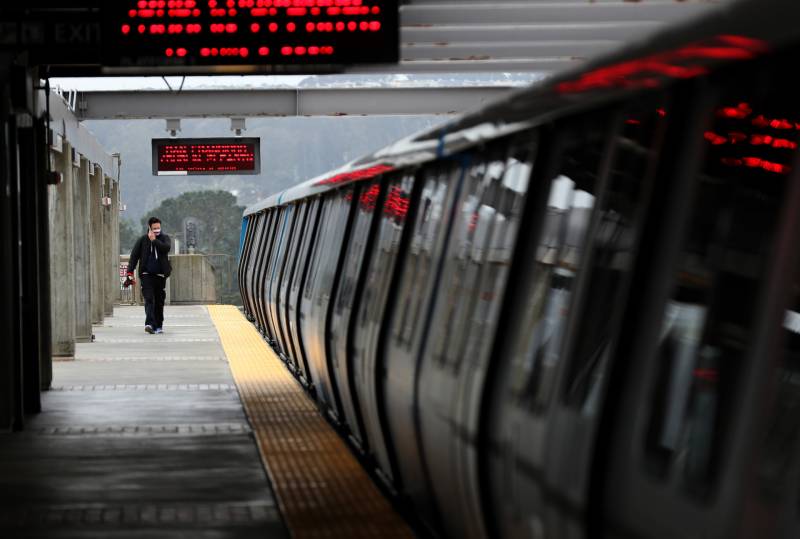“This is going to test the capacity of the existing public health system,” said Marcus Plescia, chief medical officer of the Association of State and Territorial Health Officials. “I don’t know if we have enough staff in public health departments to do that.”
Hence the hiring spree kicking off in Massachusetts and a few other places.
Partners in Health is working with state officials in Massachusetts, who say they will eventually deploy nearly 1,000 people to do contact tracing.
In San Francisco this weekend, three dozen volunteer nurses, medical students, and librarians started training at the University of California, San Francisco — the first of an expected 100 people who will supplement the city’s 10-person contact-tracing workforce.
“We are providing the people to make phone calls, we are working on standard scripts, we are working on IT solutions, training, and we are fielding teams of contact tracers,” said George Rutherford, UCSF’s head of disease and global epidemiology.
This will be the only way to contain further spread of Covid-19 once the initial surge is past, and get into the suppression phase, argues Tom Frieden, a former director of the Centers for Disease Control and Prevention. “We need an army of 300,000 people,” he told STAT.
The current CDC director, Robert Redfield, said last week that a “substantial expansion of public health fieldworkers” will be needed to undertake aggressive contact tracing — “what I call ‘block and tackle.’”
Speaking to NPR on Thursday, he said it would be “premature” to say how CDC would expand contact tracing but that planning was “far along.”
But Frieden said he doubted the federal government would help much immediately. “Until the federal response is more coherent, each state is going to be on its own,” he said.
Normally, the CDC would be taking the lead, Plescia added. “Right now, they are pretty maxed out. It is the state and local governments who will have to train people and have a system that works.”
The $2 trillion stimulus package signed into law last month creates a $150 billion Coronavirus Relief Fund for states and local and tribal governments, plus gives $4.3 billion via the CDC to help in responding to the pandemic. The money is not earmarked for epidemiology but states could, in theory, use some of the money for hiring workers to do contact tracing.
David Harvey, executive director of the National Coalition of STD Directors, has seen a steady drop in the number of staff in state and local health agencies trained to track down contacts of patients with sexually transmitted diseases, even as STD rates have soared. These same workers would have been immediately available to work on coronavirus. Now states will have to hire a fresh corps. “We need to radically increase the numbers of these positions in order to help the country recover,” he said.
“Twenty years ago, this workforce had a high of 5,000 or 6,000 people,” Harvey told STAT. “Today it is only 1,600. The reality is that we at least need a work force of 30,000 people.”
Frieden puts the needed number at 10 times that.
Luckily, potential workers are right at hand, with so many jobs lost to Covid-19 over the past weeks. “There are a lot of people out there,” Frieden said. “There are college graduates, people working at social service agencies, social workers, child health workers, people doing Meals on Wheels.”
Technology can help, and numerous apps are being developed to speed up the process of tracking down contacts. But public health experts said such tools won’t eliminate the need for thousands of new workers.
Costs would be relatively low – maybe $720 million for 30,000 workers, said Harvey.
States are not even close to having enough workers, and most state health departments contacted by STAT said they had not begun to think that far ahead. Florida, a state with the one of the smallest epidemiology work forces, hired 100 people in one weekend last month, according to the Tampa Bay Times.
Plus, there are other barriers, Holtgrave noted. To diagnose cases, many more tests are needed. And any in-person contact will require personal protective equipment, also in short supply.
That’s why Partners in Health plans to start workers out on the back end, interviewing patients who have already been diagnosed to find their contacts.
“We are not knocking on doors,” Seung said. “People are working in their homes and they are making phone calls.”
One piece of good news – it’s not hard to find people who want to do the work. Seung says his office has received more than 5,000 applications for the 500 jobs.
“People are really grasping to do something,” he said.

